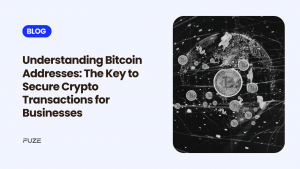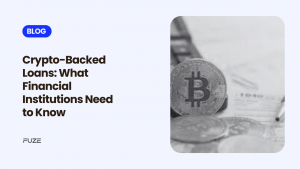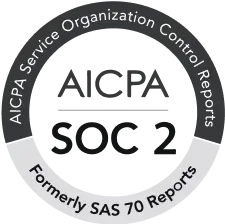The most rapidly changing financial landscape now includes stablecoins as a crucial link between traditional finance and blockchain systems. The USD-backed assets, USDC and USDT, dominated the stablecoin market until recently and shaped much of the global digital payments narrative. However, with the advent of stablecoins pegged to other currencies, such as the euro-pegged EURC, the landscape is changing, and new opportunities are emerging.
In 2024, the total market value of stablecoins surpassed $200 billion for the first time, demonstrating their critical role in global finance. Amidst this growth, EURC stands out as a new digital asset, designed to merge the stability of fiat currency with the innovation of blockchain technology. Its launch marks a shift toward a more diverse and inclusive stablecoin market, appealing to a wider range of users and applications.
In this blog, we’ll dive into the essential features of EURC, its unique benefits, and the transformative potential it brings to global digital payments and decentralised finance.
What Is EURC?
EURC is a euro-backed stablecoin that combines the reliability of traditional currency with the advantages of blockchain technology. Issued by Circle under a full-reserve model and in compliance with MiCA regulations, EURC mirrors the success of USD-based stablecoins like USDC, while functioning within the euro framework. As of January 2, 2025, EURC has €80.12 million in circulation and €81.17 million in reserves. Available on blockchains like Avalanche, Base, Ethereum, Solana, and Stellar, EURC provides global accessibility and facilitates seamless euro transactions across the decentralised finance (DeFi) ecosystem, crypto exchanges, and payment networks.
Key Features of EURC Stablecoin
- Euro Pegging for Stability
EURC is directly pegged to the euro, ensuring a 1:1 value ratio through reserves held in secure, audited accounts. This stability makes EURC an effective tool for minimising volatility in crypto markets and providing predictability in digital transactions.
- Transparency and Trust
EURC is issued by well-known financial institutions and maintains high regulatory compliance, with regular audits. Such transparency makes it a trustworthy asset for both individuals and businesses.
- Blockchain Interoperability
EURC is designed to be interoperable with other blockchain networks, which makes it highly versatile for use in DeFi applications, non-custodial wallets, and crypto exchanges. This interoperability encourages broader adoption and usability across different financial ecosystems.
- Programmability
As a digital asset, EURC can be programmed to execute smart contracts, which enables automated and conditional transactions. This is particularly useful for industries like e-commerce, supply chain management, and cross-border remittances.
Advantages of EURC in Digital Payments
- Cross-Border Efficiency
Traditional cross-border payments are often expensive, slow, and opaque. EURC simplifies these processes by allowing near-instant transfers with low fees. It cuts out intermediaries to provide a quicker, more affordable, and clearer option for international transactions.
- Hedging Against Volatility
Cryptocurrencies, like Bitcoin and Ethereum, are infamous for price volatility, making holders reluctant to use them as a means of payment. EURC offers a stable alternative, protecting value and ensuring reliable purchasing power.
- Financial Inclusion
EURC makes use of blockchain technology to provide access to financial services for underbanked and unbanked individuals. Any user can carry out secure, low-cost EURC transactions by using a smartphone and internet without relying on traditional banking systems.
- Integration with DeFi
EURC’s compatibility with DeFi platforms enables users to engage in lending, borrowing, staking, and yield-generating activities. As a euro-backed asset, it broadens the options available in DeFi markets that have typically been dominated by USD-backed stablecoins.
- Corporate and Institutional Utility
For companies operating in Europe or dealing in euros, EURC provides an effective means to manage liquidity, payroll, and cross-border payments. Its transparency and compliance features are particularly attractive to institutional players looking to responsibly adopt digital assets.
Role of EURC in the Digital Economy
- Revolutionising Payment Systems
EURC can revolutionise digital payment systems by offering a stable, fast, and low-cost alternative to traditional methods. Merchants can accept EURC payments worldwide, avoiding high processing fees and speeding up settlement times.
- Supporting CBDC Development
As central banks consider the development of digital currencies (CBDCs), EURC is a complementary asset that provides insights into user behaviour, infrastructure requirements, and market trends. Its success could inform the design and rollout of a digital euro.
- Euro Adoption in Crypto
While stablecoins pegged to the USD have been leading in the market for a long time, EURC addresses the increasing demand for local currency-backed digital assets. This diversification will further enhance the role of the euro in the crypto economy and increase its utility as a currency worldwide.
- Driving Innovation in Decentralised Finance
By incorporating EURC into DeFi ecosystems, developers can create euro-focused financial products tailored to European users. From euro-denominated lending pools to decentralised insurance solutions, the opportunities are extensive.
Challenges and Considerations
EURC has immense potential, but it also faces several challenges that need to be tackled to ensure it gains widespread acceptance and achieves long-term success:
- Regulatory Landscape: The changing regulations on stablecoins may affect the operations and expansion of EURC. Compliance with EU and international financial regulations can help build trust and credibility.
- Adoption Challenges: Competing with established USD-backed stablecoins and effectively communicating EURC’s advantages to a global audience will require significant efforts in education, partnerships, and marketing.
- Technical Risks: Like any blockchain-based asset, EURC must address potential risks, including vulnerabilities in smart contracts and issues related to network congestion.
Conclusion: The Future of EURC
EURC represents a significant turning point in the stablecoin market, introducing a euro-based digital asset that combines the trustworthiness of traditional finance with the innovative features of blockchain technology. Its euro peg, transparency, and programmability position EURC as more than just a stablecoin; it serves as a driving force for transforming digital payments and financial systems.
As the world moves rapidly towards digitalisation, EURC paves the way for new opportunities: enhancing financial inclusion, transforming cross-border payments, and increasing the euro’s role in the cryptocurrency space. Its potential goes well beyond being merely a transactional instrument; it lays the groundwork for a variety of applications, including decentralised finance, supply chain improvements, tokenised real-world assets, and programmable money solutions.
By tackling issues such as security, regulatory clarity, and user education, EURC can usher in a new age of financial inclusivity and innovation. Cooperation among regulators, developers, and users will be essential to unlocking its complete potential.
For businesses, EURC provides efficient, cost-effective payment options that cross international borders. For individuals, it offers an easy entry point into the growing digital economy. With EURC, we catch a glimpse of the future: a financial system that is inclusive, efficient, and driven by innovation. The opportunities are vast, and this journey is just beginning.
Disclaimer: Virtual assets carry significant risks, including high volatility and potential loss of your entire investment. They are not backed by governmental protections, and recourse may be limited in case of loss. Always assess your risk tolerance, fully understand the risks, and seek independent financial advice if needed before investing.
Frequently Asked Questions
- How is EURC used in digital payments?
EURC can be used for peer-to-peer transactions, online purchases, and remittances, offering a fast and secure alternative to traditional euro transfers. It is also widely accepted within the crypto ecosystem. - Is EURC compliant with European regulations?
Yes, EURC complies with the European MiCA (Markets in Crypto-Assets) regulations, ensuring its legitimacy and adherence to financial standards within the European Union. - Can I earn passive income by staking EURC?
While EURC is a stablecoin and not typically associated with staking, it can be used in DeFi platforms to earn passive income by participating in liquidity pools or lending protocols. - How does the full-reserve model of EURC work?
Under the full-reserve model, every EURC token is backed 1:1 by euros held in reserves, ensuring that the token’s value remains stable and fully redeemable at any time. - What role does EURC play in the broader DeFi ecosystem?
EURC plays a key role in the DeFi ecosystem by providing a stable and widely accepted euro-backed asset for trading, lending, borrowing, and liquidity provision, contributing to the growth and stability of decentralized financial services.







